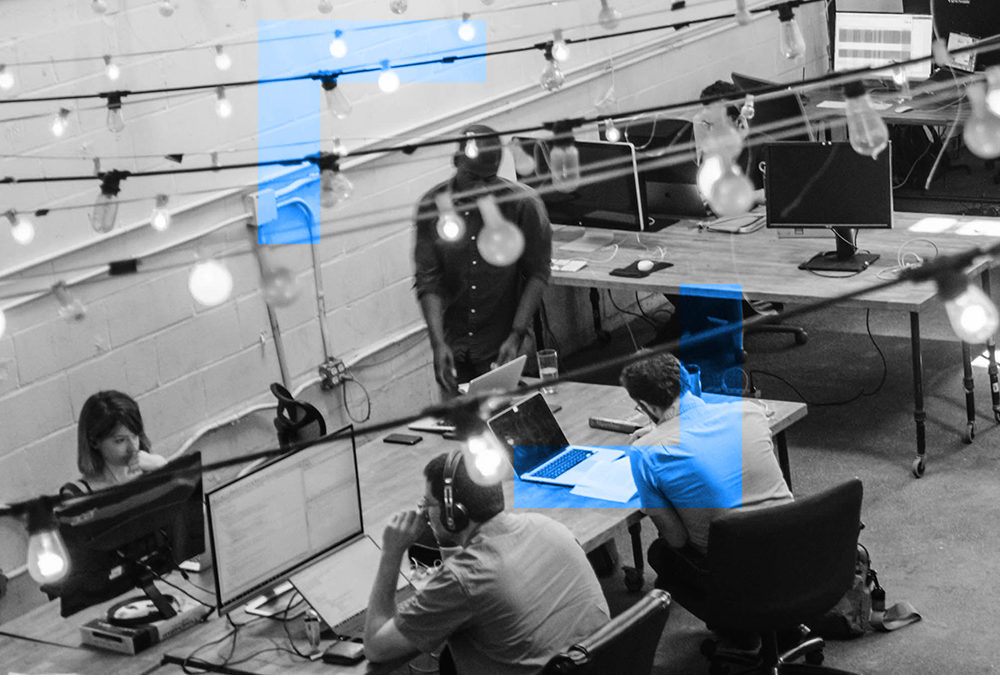We all know what the stereotypical office looks like. It flickers with fluorescent lighting, has endless rows of cubicles and assumes every employee is identical to the next one. In short, it’s actually counterproductive to an ability to perform.
But that doesn’t have to be the end of the story.
Companies that actively work to engage their employees can gain a multitude of benefits, with productivity being a primary goal of most engagement programs. Unfortunately, these companies often make inefficient employee engagement choices, employing them as adrenaline shots rather than sustainable and prolonged measures across the company.
That’s not to say that employee engagement is an unworthy venture. Instead, it’s a matter of purposefully investing in particular areas. Specifically, your company’s culture, technology and physical environment can be utilised to help engage your employees and to raise productivity across the board. Read on to see what improving these three areas can do for you.
Culture
Company culture may sound like a nice-to-have; something limited to Friday drinks or birthday lunches. But, used right, it can be instrumental to determining whether your employees perform to their best potential or are simply passing the time. For example; if your company culture is extremely pressurised and restrictive, you’re more likely to induce stress and anxiety in your employees. These are traits that fail to generate productive employees. This means that a more relaxed and transparent company will work to support and empower your employees in ways that sheer pressure cannot.
You can nail this great company culture by changing a few simple things; to start, improve the communication of company values, increase hierarchical transparency and emphasise employee collaboration. You should also make an active effort to note what each employee’s individual strengths are, and encourage them to act on them. This way, you capitalise on what each employee is best at, and don’t waste them forcing them into tasks that another employee may excel at. It also means employees are better equipped to solve problems independently, rather than asking others for how to proceed. Furthermore, allowing your employees small measures of freedom, like working from home and flextime, means they can complete their work according to their own personal, optimal schedules.
Technology
It seems that there’s no part of the community that technology hasn’t infiltrated. From iPhones to smartwatches, it’s safe to assume that your employees are familiar with technology outside the office. What this means for the workplace is that it must support a level of tech that matches what your employees already depend on. Employees can become frustrated if they are accustomed to a certain level of effectiveness from their own personal devices that aren’t being reflected in the office, leading them to drag their feet during their work day and blame it on the tech.
However, it’s not just the matter of making sure your computers and internet are up to scratch. Technology should be leveraged in order to enable a new kind of productivity. Encourage employees to communicate with each other online, and initiate virtual teams so they have constant access to their coworker’s skills and experiences. This decreases time lags and allows for conversations to be enriched with the use of files, videos and photos. It also aids collaboration, with the swift and often simultaneous sharing and editing of online material. You should also encourage employees to bring their own devices to work and to download note-taking and list apps. This can help gamify otherwise tedious parts of their everyday routine and provides a work-life balance they can easily manage.
Environment
Your employees generally spend 5 days a week, and 8 hours a day in the office. This is a significant part of their week that they spend in the office, which means it’s essential for an office to be helpful and supportive to employees. Instead of allowing your workplace to frame your employees in a constant state of apathy, utilise it to raise their productivity. This can be done by adding features like isolation rooms, moveable furniture and a hot desk system. This helps your employees strike the balance between teamwork and independence, allowing them to easily ask for help but also providing them a place to knuckle down and focus. Modern employees especially understand the importance of flexibility to their work, and shouldn’t feel restricted to their desk during the work day.
Employees also appreciate efforts to inject activity into the tediousness of the work day. Small efforts such as standing desks, gym benefits and trading in chairs for yoga balls help keep your employees active and switched on throughout the work day. Playing soft classical music in the background can also help by providing white noise and has the additional benefit of raising IQ.
Final Thoughts
If your employees aren’t reaching an expected level of productivity, it doesn’t mean you have to make a monumental effort to raise it. Making sure your employees feel supported, empowered and comfortable in their workplace is an excellent foundation for widespread and sustainable productivity. By targeting these three areas, you invest in what matters most to employees at work and can raise your company’s productivity for good.


Recent Comments